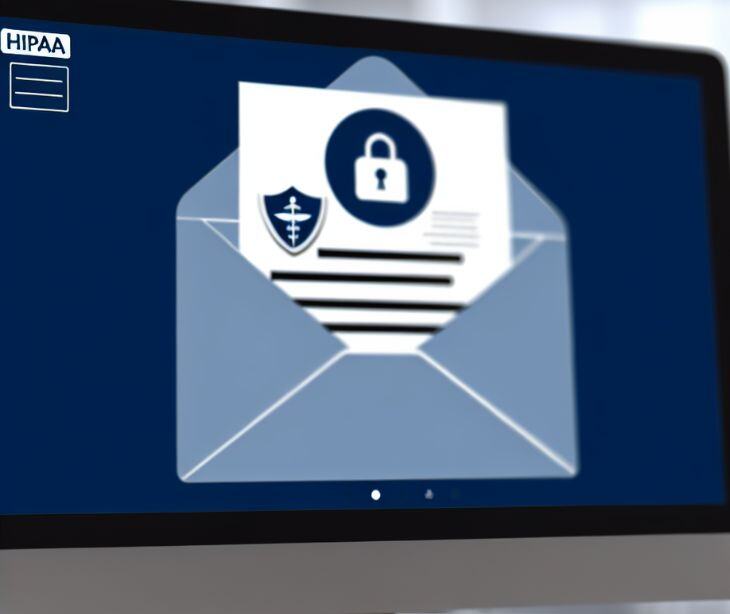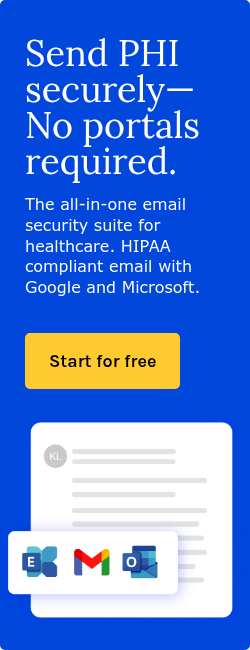
In the US, compliance is enforced under the Health Insurance Portability and Accountability Act (HIPAA) for secure delivery and storage of electronic communications. With email volumes doubling and redoubling, the challenge lies in safeguarding email content and handling systems at scale while maintaining privacy, efficiency, and compliance.
According to a study published in IRE Journals, titled ‘Scalable Real-Time and Long-Term Archival Architecture for High-Volume Operational Emails in Multi-Site Environments,’ a new scalable architecture for processing large quantities of secure email has been proposed. The new design addresses the dual imperatives of immediate access and regulatory compliance while guaranteeing maximum cost-effectiveness and sustainability in the long term.
The report says, "The scalability of the architecture is critical for handling the exponential growth in email volumes experienced by enterprises."
Horizontal scalability
Legacy email infrastructures are not geared to support the increasing burdens placed on businesses today. The study speculates a design that is horizontally scalable without sacrificing flexibility for overall overhauls when things start moving fast. The solution lies in decoupling system components so they can breathe and grow in their own dimensions. According to the authors, "The architecture separates the email transport layer, processing services, and data storage, ensuring each component can scale independently."
This decoupling allows the architecture to be modular and adaptive. With mailbox-level load balancing, mail is spread over several archival mailboxes using different algorithms, such as round-robin or hash-based distribution, so "no single mailbox becomes a bottleneck," sustaining system performance.
The IRE Journals study describes a sound model for integrating large-scale email architecture in enterprise setups, and more specifically, those under regulations like HIPAA. It is a record of a horizontally scalable system, based on decoupled components and dynamic orchestration, which provides real-time access, secure data handling, and long-term cost efficiency.
HIPAA compliant email solutions, like Paubox, have already put many of these principles into practice. It incorporates advanced encryption and a cloud-native design, helping healthcare organizations scale without compromising privacy or performance.
Paubox relies on cloud orchestration frameworks like Kubernetes to dynamically manage workloads. This architecture allows it to provision more processing containers as email traffic ramps up, just like the study describes: "Technologies like Kubernetes can orchestrate containerized processing services, enabling dynamic scaling based on traffic spikes."
Decoupled, modular architecture
Scalable systems must allow each component to evolve or expand without disrupting the others. The IRE study describes “decoupled components,” in which email transport, storage, and processing services function independently.
Paubox’s email encryption solution fits this model well. Its architecture separates the email-sending process from the encryption process, where emails are automatically encrypted without user intervention or inconvenient portals.
In other words, its modularity supports scalability because each function can grow with demand independently. So, increased outbound emails don’t need to trigger a complete overhaul of encryption or compliance tools.
Immediate access
Immediate access to saved emails is a business necessity, especially in customer service and healthcare environments where speed of response determines success or failure. The proposed architecture performs well here, allowing for instant access through IMAP protocols. Emails are "archived and made retrievable within seconds," boosting customer satisfaction and productivity.
Paubox automatically encrypts outgoing emails, securing its content during transmission and at rest. Its immediate capability is beneficial for healthcare workers who need instant access to email records during patient interactions.
Regulatory compliance
Healthcare email systems must also meet regulatory requirements for data storage, retention, and auditing. The study addresses this stating, “Emails [must be] encrypted both at rest and in transit, using industry-standard protocols such as Advanced Encryption Standard (AES) and Transport Layer Security (TLS).”
Paubox follows the same encryption practices, where emails are automatically secured in motion and at rest, and customers benefit from access controls, retention configurations, and built-in audit trails.
For organizations juggling GDPR, HIPAA, SOX, or PCI DSS mandates, this built-in compliance framework is necessary and scalable. As the IRE study warns, “Non-compliance could otherwise result in significant financial and reputational losses."
Auditing and monitoring capabilities are also built into the system. "Comprehensive audit logs record all data access and changes," and routine compliance checks, including SOC 2 and ISO 27001 certifications, are part of ongoing operational procedures. Healthcare organizations must adhere to compliance for inspections or audits.
In addition to passive compliance controls, the design allows for proactive policy enforcement. As an example, email content can be scanned for protected health information (PHI) using pattern-matching routines, flagging potential violations before messages are archived or sent.
Cost efficiency
Scalability and compliance may be costly, but this architecture proves that cost-effectiveness and high performance can coincide. More specifically, using existing infrastructure, cloud services, and open-source technologies, the system can lower operational costs without negatively impacting performance.
Among these strategies is storage tiering. Data centers store data that is being accessed regularly on high-performance devices like storage systems, whereas older data is moved to less expensive devices, like Amazon Glacier or Azure Blob Storage.” This reduces storage costs and maximizes resource use. As the study describes, "Storage tiering ensures that frequently accessed data remains on high-performance systems, while older, less critical data is migrated."
Automation also contributes to cost savings, where operations such as email ingestion, parsing, and indexing are handled asynchronous processing at scale to reduce human intervention, and labor costs, and increases system reliability.
Also, by using in-house archiving platforms, businesses can "dismantle reliance on costly third-party solutions." Paubox Email, for example, integrates directly with existing email platforms like Gmail, for HIPAA compliant encryption and archiving without requiring separate logins or third-party plugins.
Optimization
The authors suggest that while many email systems offer scalability, compliance, and efficiency, later iterations might still be optimized. For instance, the inclusion of machine learning algorithms for email classification or detecting anomalies would make operations even easier.
The study also recommends advanced threat detection. With threats evolving, "adding the system with advanced threat protection, including behavioral anomaly detection, would further enhance email security."
Finally, with the potential of big data analysis and artificial intelligence, organizations can read archived emails to identify customer behavior, operational efficiency, or emerging issues around compliance. "Big data integration enables more insightful analysis," the study describes, creating new avenues for strategic decision-making.
Including Natural Language Processing (NLP) would also allow companies to extract sentiment or intent from email text, allowing proactive response or triage in high-volume service situations.
Go deeper: How deep learning is redefining healthcare cybersecurity
Steps for implementing scalability in HIPAA compliant emails
1. Adopt a horizontally scalable architecture
Healthcare organizations must adopt horizontally scalable systems to improve email processing and storage as demand increases. For example, the system architecture should decouple the email transport layer, processing services, and storage infrastructure.
In practice, this could look like distributing email traffic across multiple archival mailboxes through transport agents. Algorithms like rash-based or round-robin load distribution algorithms provide even loads and prevent system bottlenecks with the assurance of performance during peak loads.
2. Use cloud-native orchestration
Cloud-native technologies such as Kubernetes benefit scalable HIPAA compliant email systems. It provides dynamic resource scaling for processing services by containerizing them. System administrators can leverage load testing software such as Apache JMeter to make systems stable under high loads, so scaling doesn't interrupt email performance and delivery.
For example, during high demand like public health emergencies or health advertising campaigns, Kubernetes can scale the active processing pods automatically to cover the peak without human intervention.
3. Ensure instant access to archived emails
Implementing asynchronous processing pipelines allows emails to be ingested, indexed, and archived within seconds. IMAP protocols allow instant retrieval by customer service teams or clinicians and incorporate indexed data storage using unique identifiers (UIDs) to speed up query responses.
Healthcare providers must have immediate access to these emails to enhance patient support, reduce administrative delays, and improve automated workflow, even triggering alerts based on email content.
4. Use existing platforms
Platforms like Paubox Email Suite provide built-in scalability and HIPAA compliance without disrupting existing workflows. Paubox integrates directly with Gmail and Microsoft 365, offering automatic encryption, and inbound and outbound archiving, and maintains federal compliance. These platforms can help simplify implementation and reduce training time, as teams can continue using the tools they’re already familiar with.
5. Plan for cost-efficient data retention
Providers must define and enforce retention policies aligned with HIPAA and organizational requirements. Next, they must implement storage tiering to retain frequently accessed data on high-performance infrastructure, while moving older, less critical emails to long-term, lower-cost storage solutions.
6. Maintain compliance as you scale
Healthcare providers must maintain compliance using a HIPAA compliant email solution, like Paubox, enforce access controls, and keep audit logs. Providers can also automate compliance reporting and integrate regular checks such as SOC 2 or ISO 27001 certifications to prove adherence to regulatory frameworks.
Learn more: SOC2 certification or HITRUST?
FAQs
Who needs to comply with HIPAA?
HIPAA compliance is required for covered entities, such as healthcare providers, health plans, and healthcare clearinghouses, as well as their business associates who handle protected health information (PHI).
How does scalability help with HIPAA compliance?
A scalable system supports data retention, access, and encryption even as email traffic increases, so compliance requirements are met regardless of volume.
How can providers make Google Workspace email HIPAA compliant?
Providers must use a Business or Enterprise plan, sign a business associate agreement (BAA) with Google, and use a HIPAA compliant platform to protect patient information.
Subscribe to Paubox Weekly
Every Friday we'll bring you the most important news from Paubox. Our aim is to make you smarter, faster.




